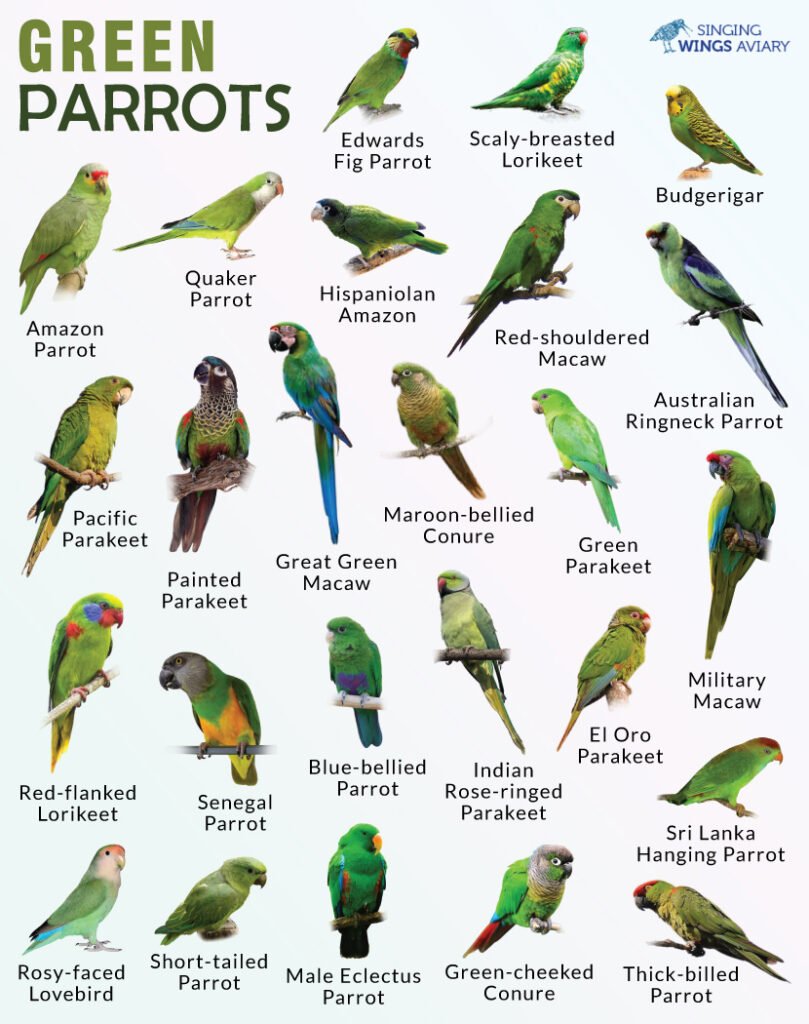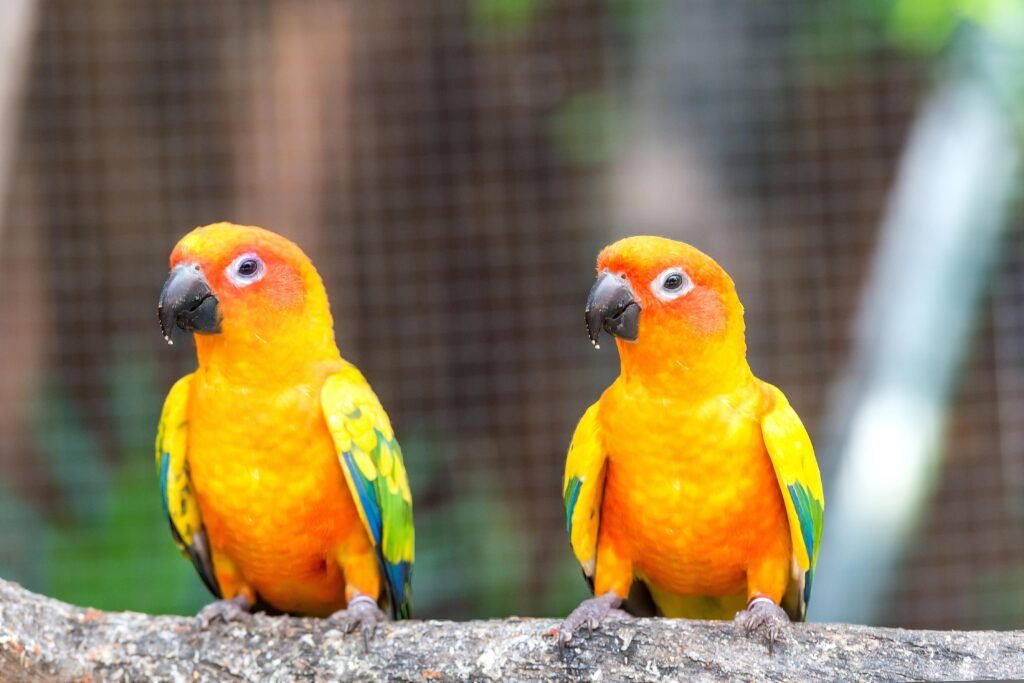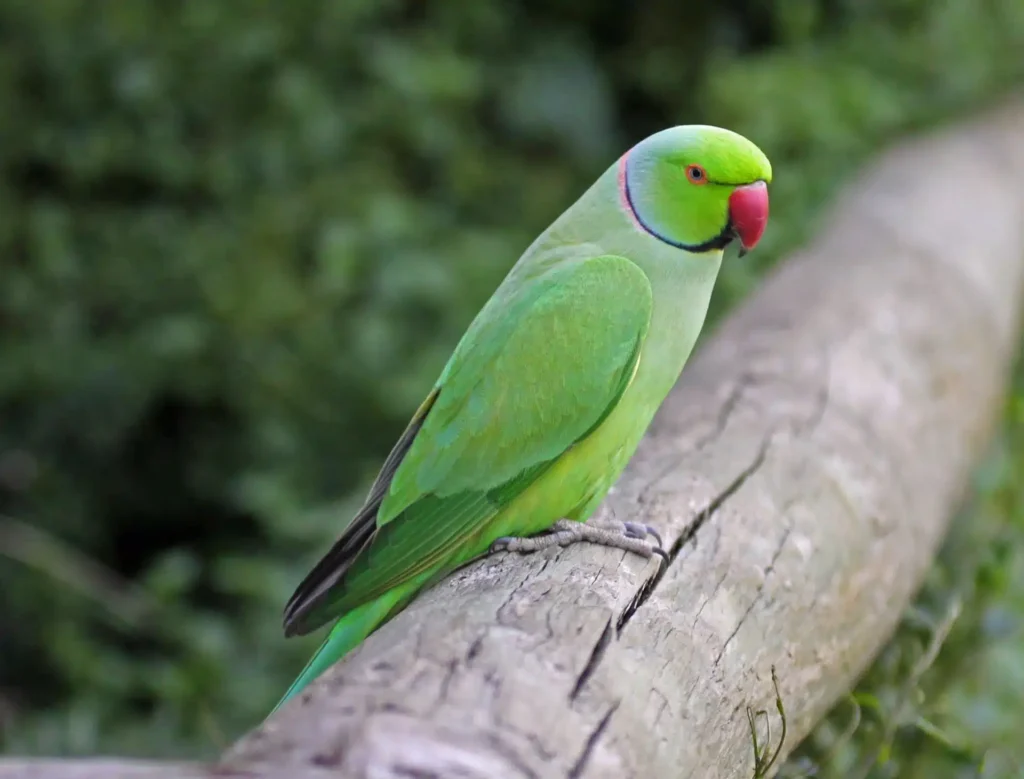Emerald Charmers: The Complete Guide to Conures Care
Categories: Companion Birds, Parrots, Small Parrots, New World Parrots, Colorful Birds, Playful Birds, Cage Birds, Beginner-Friendly Birds, Social Birds, Fruit-Eating Birds
Introduction: Meet the Green Cheek Conure
Green Cheek Conures, scientifically known as Pyrrhura molinae, are small, vibrant parrots that have won the hearts of bird enthusiasts worldwide. Native to South America, these pint-sized powerhouses of personality pack all the charm and intelligence of larger parrots into a more manageable size. Known for their playful antics, affectionate nature, and striking plumage, Green Cheek Conures have become increasingly popular as pets for both novice and experienced bird keepers alike.

History and Origin: From South American Canopies to Our Homes
The Green Cheek Conure’s journey from the lush forests of South America to our living rooms is a tale of adaptation and endearment. These birds naturally inhabit the woodlands and forests of Brazil, Bolivia, Argentina, and Paraguay. They were first described by French ornithologist Alcide d’Orbigny in 1854, named after Francisco Molina, a Bolivian naturalist.
The popularity of Green Cheek Conures as pets began to rise in the late 20th century. Their smaller size compared to many other parrot species, combined with their playful nature and relatively quieter vocalizations, made them ideal for apartment living and families seeking a more manageable parrot companion.
In recent years, selective breeding has led to the development of several color mutations, expanding the palette of these already colorful birds. The first yellow-sided mutation was developed in the 1990s, followed by cinnamon, pineapple, and turquoise variations, among others.
A significant event in the world of pet conures occurred in 2007 when the Wild Bird Conservation Act was amended, further restricting the import of wild-caught birds into the United States. This legislation emphasized the importance of captive breeding programs and responsible pet ownership, solidifying the role of domestically bred conures, including Green Cheeks, in the pet trade.
Green Cheek Conure Care: A Comprehensive Guide
- Housing:
- Cage size: Minimum 24″ x 24″ x 24″, larger is better
- Bar spacing: 1/2 to 5/8 inch
- Provide various perches of different diameters and textures
- Include plenty of toys for mental stimulation (foraging toys, swings, bells)
- Environment:
- Temperature: 65°F to 80°F (18°C to 27°C)
- Avoid drafts and sudden temperature changes
- Provide 10-12 hours of darkness for proper sleep
- Social Needs:
- Green Cheeks are social and need daily interaction
- Consider keeping pairs for companionship if unable to provide extensive human interaction
- Exercise:
- Allow at least 2-3 hours of supervised out-of-cage time daily
- Ensure a safe, bird-proofed area for play and exploration
- Grooming:
- Offer bathing opportunities 2-3 times a week
- Trim nails and wings as needed (consult a vet if unsure)
- Training:
- Start with basic commands like “step up”
- Use positive reinforcement with treats and praise
- Consistently work on socialization and handling

Green Cheek Conure Cuisine: A Balanced Diet for Optimal Health
- Pellets: 60-70% of diet
- High-quality pellets formulated for small to medium parrots
- Fresh Fruits and Vegetables: 20-30% of diet
- Offer a variety daily (e.g., leafy greens, berries, papaya, bell peppers)
- Avoid avocado, chocolate, and caffeine
- Seeds and Nuts: 10% of diet
- Small amount of high-quality seed mix and nuts as treats
- Protein Sources:
- Cooked eggs, cooked lean meats, legumes in moderation
- Fresh Water:
- Change daily and clean containers regularly
Health Matters: Common Green Cheek Conure Ailments and Prevention
- Respiratory Infections:
- Symptoms: Wheezing, tail bobbing, nasal discharge
- Prevention: Avoid drafts, maintain clean environment
- Psittacosis:
- Symptoms: Lethargy, ruffled feathers, eye/nasal discharge
- Prevention: Quarantine new birds, maintain hygiene
- Feather Plucking:
- Symptoms: Bare patches, damaged feathers
- Prevention: Reduce stress, provide mental stimulation
- Nutritional Deficiencies:
- Symptoms: Poor feather quality, weakness
- Prevention: Provide a balanced diet
- Beak and Feather Disease:
- Symptoms: Abnormal feather growth, beak deformities
- Prevention: No cure, but good hygiene practices can prevent spread
Regular check-ups with an avian veterinarian are crucial for maintaining your Green Cheek Conure’s health.

Business: Breeding and Beyond
Breeding Green Cheek Conures can be a rewarding hobby or business venture. Key considerations include:
- Genetics: Understand color mutations and inheritance patterns
- Setup: Proper breeding cages, nest boxes, and environment control
- Diet: Enhanced nutrition for breeding pairs
- Health: Regular vet check-ups and potential hand-feeding of chicks
- Legalities: Check local regulations on bird breeding and sales
Green Cheek Conure Prices by Variety and Quality:
| Variety/Quality | Price Range (USD) |
|---|---|
| Standard Green | $150 – $300 |
| Pineapple | $200 – $400 |
| Turquoise | $250 – $450 |
| Yellow-Sided | $200 – $400 |
| Show Quality | $400 – $800+ |
| Hand-Raised | $250 – $500 |
Prices in Different Regions:
| Country/Region | Price Range (Local Currency) | Approximate USD |
|---|---|---|
| USA | $150 – $600 | $150 – $600 |
| UK | £200 – £600 | $275 – $825 |
| Australia | $350 – $800 AUD | $260 – $595 |
| Canada | $300 – $800 CAD | $240 – $640 |
| Germany | €200 – €600 | $225 – $675 |
| Japan | ¥30,000 – ¥80,000 | $270 – $720 |
Green Cheek Chatter: FAQs
- How long do Green Cheek Conures live?
With proper care, they can live 10-15 years, some even reaching 20+. - Can Green Cheek Conures talk?
They can learn to mimic some words and sounds, but are not known for extensive vocabularies. - Are Green Cheek Conures loud?
They are one of the quieter parrot species, but can still be vocal at times. - How can I tell if my Green Cheek Conure is male or female?
Visual sexing is difficult; DNA testing is the most accurate method. - Do Green Cheek Conures need companions?
They can bond strongly with humans but may benefit from avian companionship if owners are often away. - How often should I clean my conure’s cage?
Spot clean daily, with a thorough cleaning weekly. - Can Green Cheek Conures eat human food?
Some fruits and vegetables are safe, but avoid avocado, chocolate, and caffeine. - How often do Green Cheek Conures need to bathe?
Offer bathing opportunities 2-3 times a week. - Do Green Cheek Conures need their wings clipped?
It’s a personal choice; discuss pros and cons with an avian vet. - How can I tell if my Green Cheek Conure is sick?
Watch for changes in appetite, droppings, behavior, or appearance.

Quick Facts: Green Cheek Conure Edition
| Aspect | Information |
|---|---|
| Scientific Name | Pyrrhura molinae |
| Origin | South America (Brazil, Bolivia, Argentina, Paraguay) |
| Size | 9-10 inches (23-25 cm) |
| Weight | 2-2.8 oz (60-80 g) |
| Lifespan | 10-15 years (up to 20+ with excellent care) |
| Diet | Pellets, fruits, vegetables, some seeds and nuts |
| Social Needs | High; benefit from companionship |
| Talking Ability | Limited; can mimic some sounds |
| Intelligence | High; can learn tricks and solve puzzles |
| Exercise Needs | 2-3 hours out-of-cage time daily |
| Noise Level | Moderate; quieter than many other parrots |
| Compatibility | Good with families, including gentle children |
| Color Mutations | Green, Pineapple, Turquoise, Yellow-Sided, Cinnamon |
| Breeding Age | 1-2 years |
| Clutch Size | 4-6 eggs |
| Incubation Period | 22-25 days |
| Fledging Age | 6-8 weeks |

Keywords: Green Cheek Conure care, pet conures, conure breeding, conure diet, conure health, conure training, conure cage setup, conure prices, conure mutations, South American parrots, pet birds, avian companionship, small parrots, colorful birds
Views: 0









